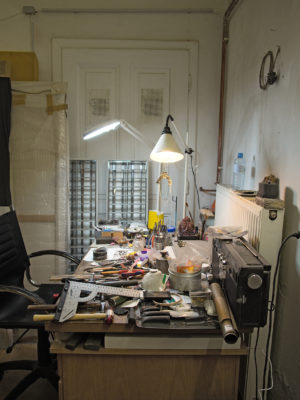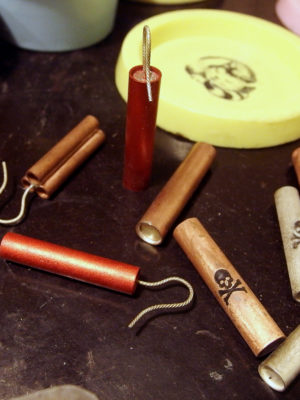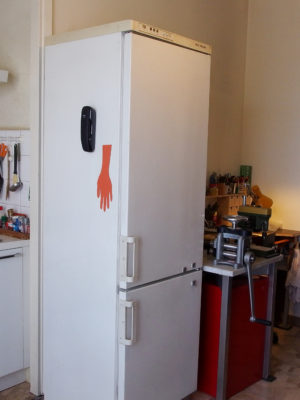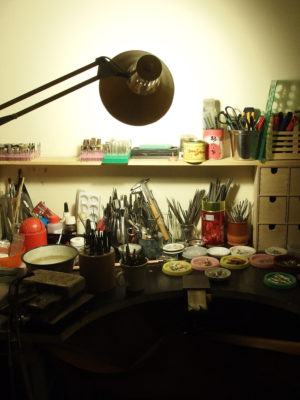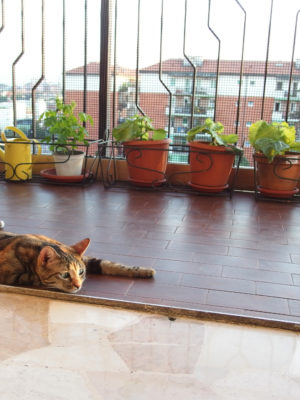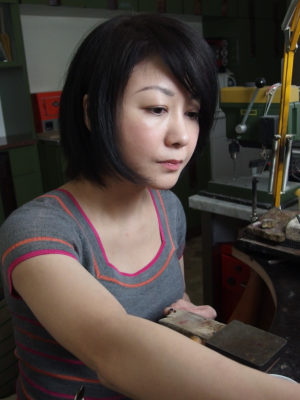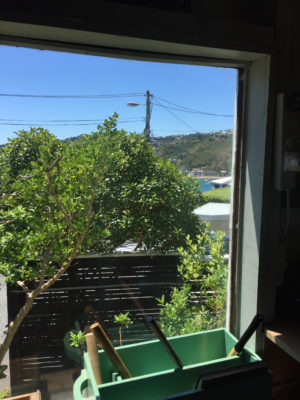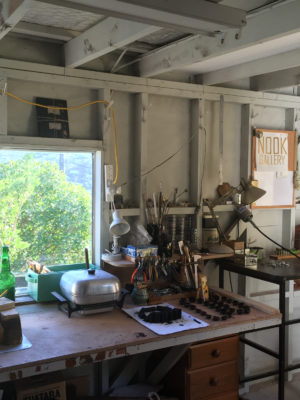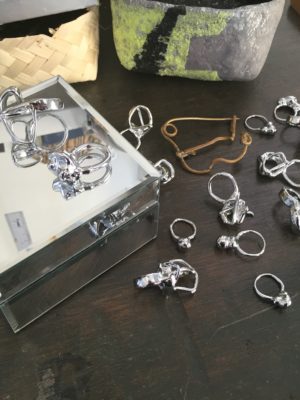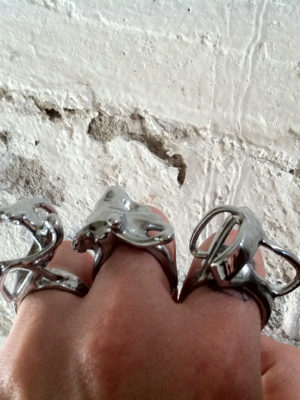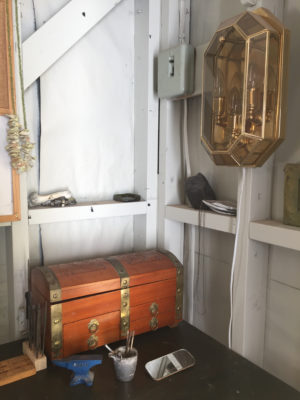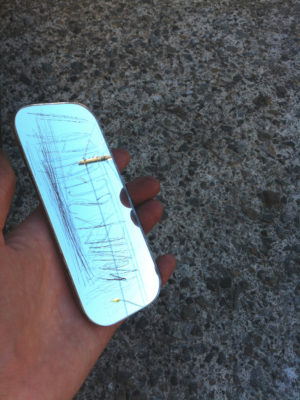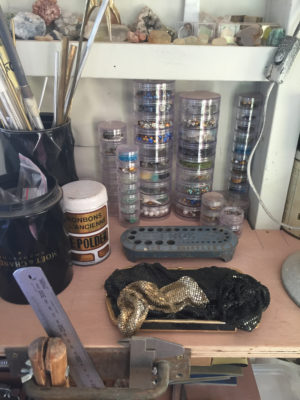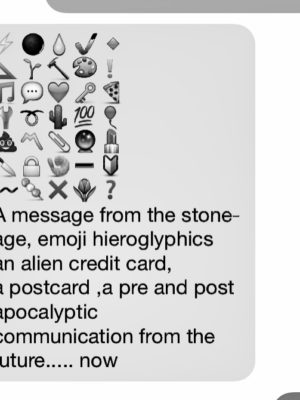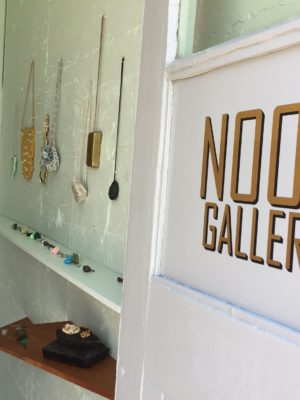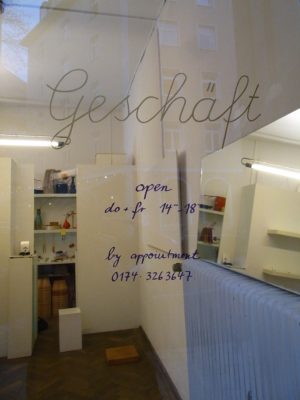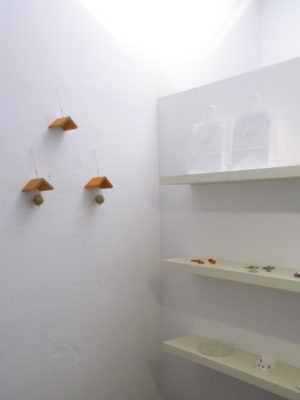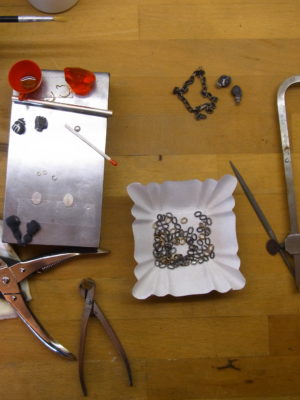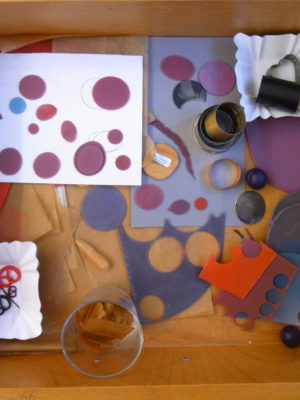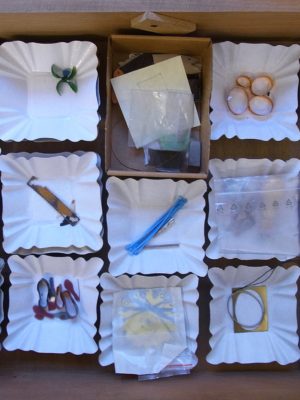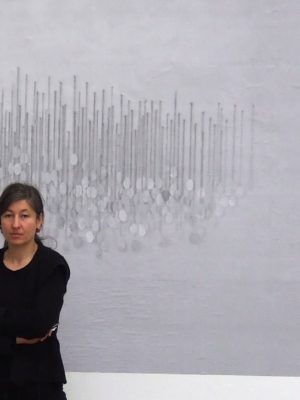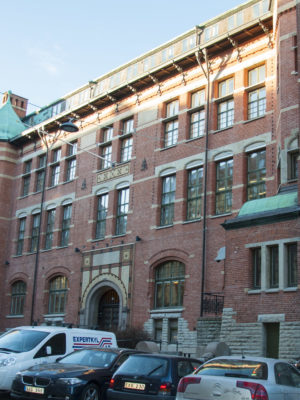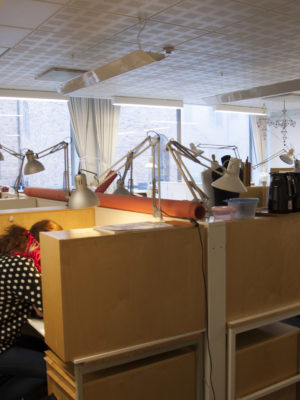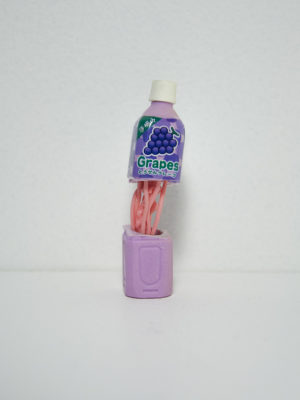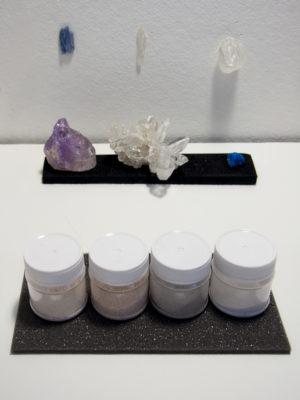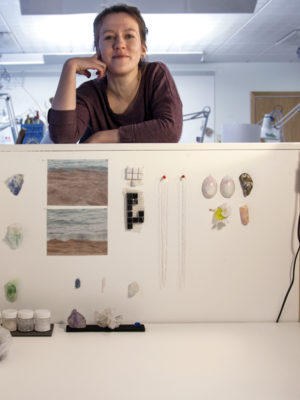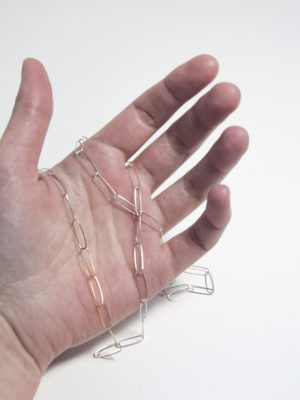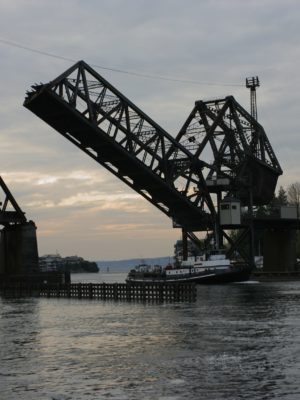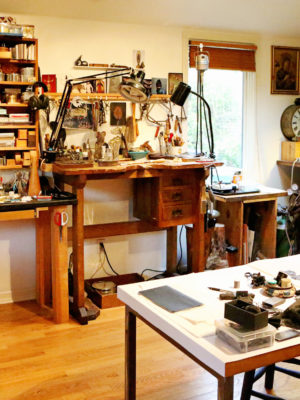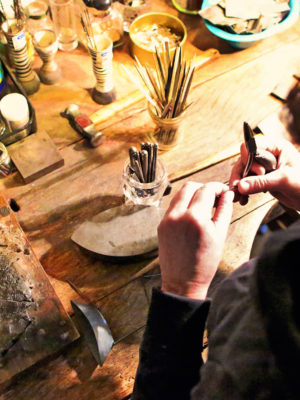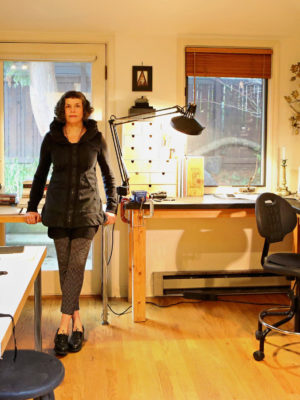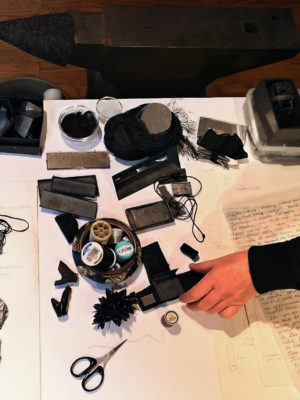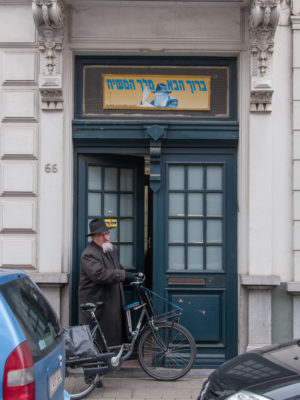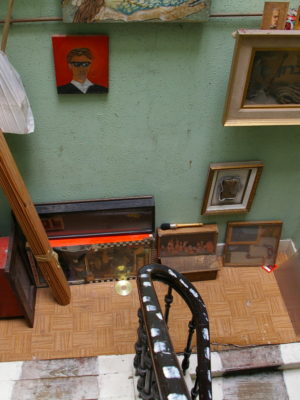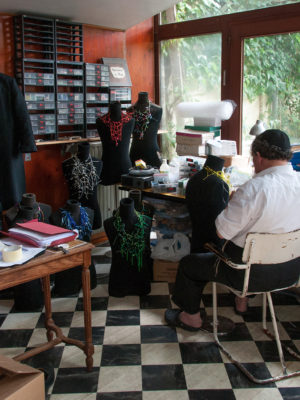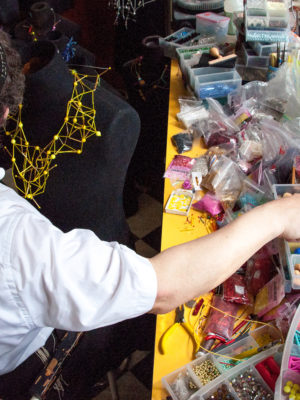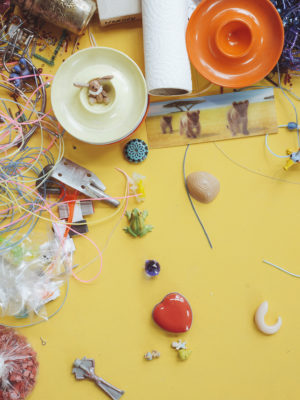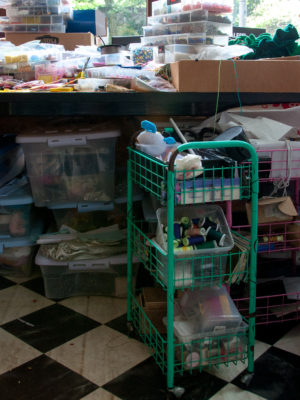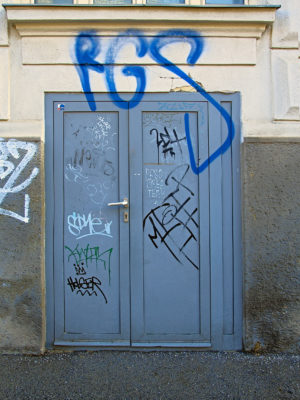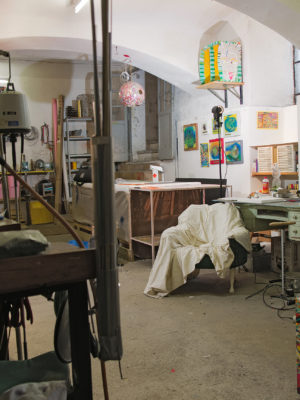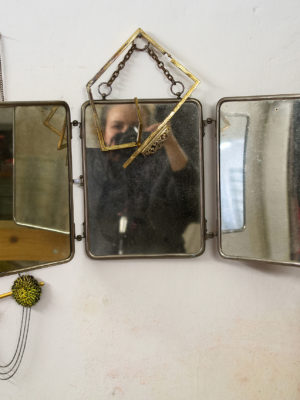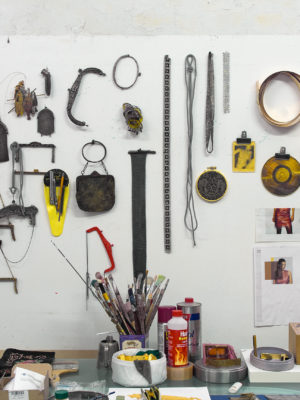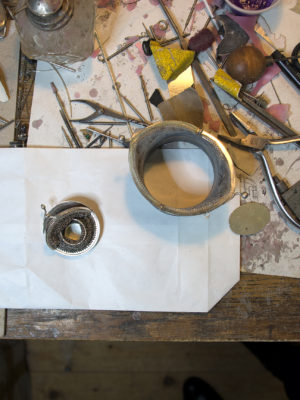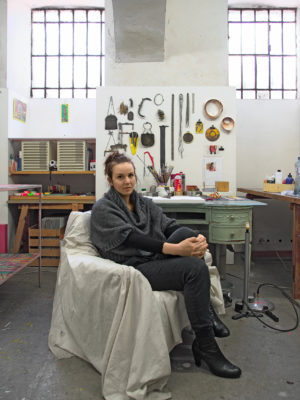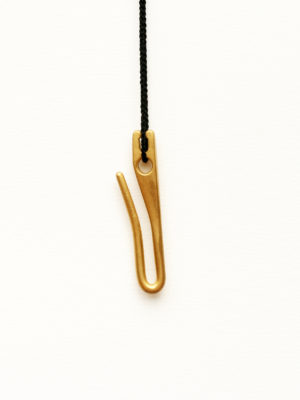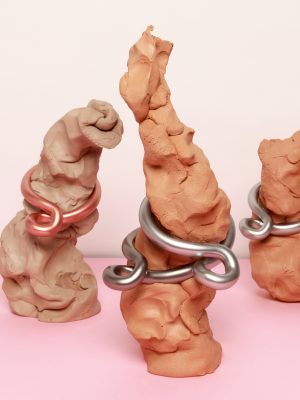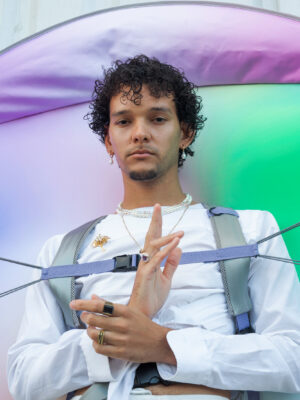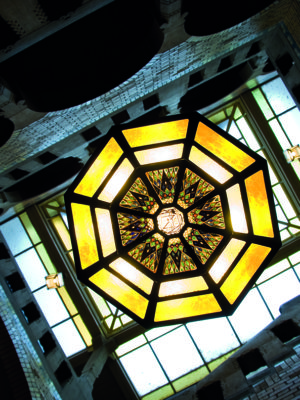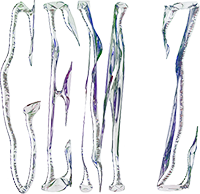AKIKO KURIHARA
Milan, Italy
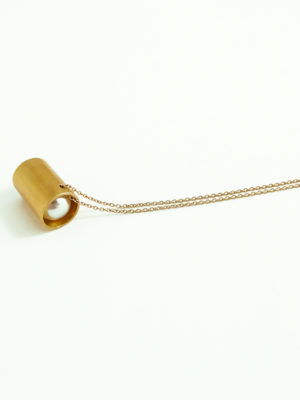
My studio is located in Milan, Italy. I mainly work from home, and my studio is in the corner of my kitchen: my “cockpit”. It’s not big, but cosy and I’m satisfied with this place. I moved from Munich to Milan in the end of 2011, because of my husband’s job transfer. My place is a common flat in a nice neighbourhood. It has two nice balconies. When the weather is good, we have a nice view, even of the beautiful Alpen, because the flat is located on the 8th floor at the top of the building. In the evening, I often enjoy watching the stars and having a beer. Very relaxing, I really love my place. I also share my studio with my cat. Her favourite place is top of the fridge, next to my workbench. When I am working, she will come into the kitchen and jump up onto the top of the fridge and gaze upon me for hours.
When I need to melt metals, need to hammer, or punch with noise, I go to the private jewellery school Scuola Orafa Ambrosiana, where I rent a bench monthly. I can also use some large equipment there.
Right now I’m working on a continuation of the Dangerous Jewellery series for which I previously made the Bomb Earrings. The new dynamite pieces use copper or silver pipes with different shapes and sizes. Other current test pieces use the structure of the steel safety pin. They could be brooches or necklaces, but I’m not sure yet. They are on the way to finding beautiful forms and lines, which are born from the most basic and simplest work of bending the wire with pliers. At the same time, I’m trying to put some color on those wires using my electro color-plating machine.
My piece included in the SCHMUCK’16 exhibition is a necklace with a simple trick. An Akoya pearl is in a tube made of 18K gold. The Akoya pearl looks like it will come out of the gold tube but never actually does because of the chain. It speaks about the casual discoveries in our daily life and small findings in the physical phenomena that we unconsciously use everyday. I always try to create jewelry pieces out of such discoveries, using humor and wit in minimalistic ways.
MONIEK SCHRIJER
Wellington, New Zealand
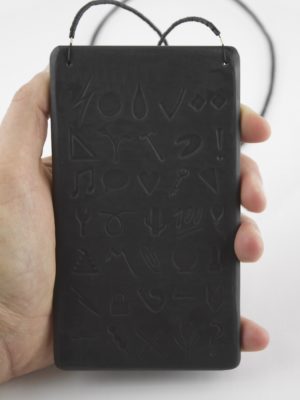
My studio is in a double garage in Island Bay, which is the located on the south coast of Wellington City. The city is about twelve minutes away by car. I have been in this studio since August 2015 when I returned to Wellington after being the Artist in Residence with the Francois van den Bosch foundation in Amsterdam for two months. The garage is divided into parts with frames and polythene. Basically I’m inside a bubble, and I share the garage with one other creative genius, CJ, who designs and builds interior solutions for neat places in Wellington and beyond. I have a simple set up inside my bubble: a desk and soldiering station, but utilize tools that builders would use in the other part of the garage like jigsaws, drills and a sander.
The piece ‘Tablet Of,’ included in SCHMUCK’16 is made out of porcelain slate which I engraved with a pen engraver. It was the first work I made in my current studio and to me it speaks of human history. THEN , NOW and the FUTURE… It could be a message from the Stone Age, emoji hieroglyphics, an alien credit card, a postcard, a pre and post-apocalyptic communication from the future now… Or maybe it’s just a pizza recipe, I don’t know. My practice tends not to be project based. It seems to be constantly revealing itself over time as I further investigate and navigate the world around me. I’m just creating one body of work, I think. My Scribble Rings are included, which are 2D scribbles transformed into 3-dimensions and made from bronze. I love bronze and the history of bronze, but I had them chrome-plated so that they reflect well. Mirror brooch is the same size as a smart phone and is ideal for selfies… that’s about all it can do. To me it has a bit of humour.
Recently I have opened a showroom / gallery called Nook Gallery with my buddy and fellow jeweller, Chloe Rose Taylor. It’s a small little space (a nook) in the city, and is painted mint green with amazing colour changing lights, simple shelves and jewellery drawers. We are really enjoying educating and showing Wellington the power of art jewellery, though we are only open for a few hours over the weekend as we both are busy ladies.
HENRIETTE SCHUSTER
Munich, Germany
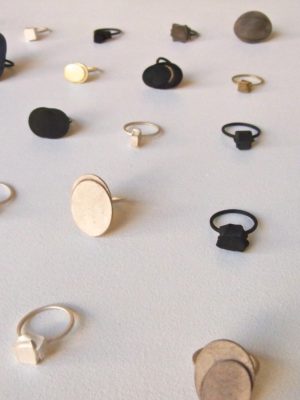
I have been working in my studio/gallery space called Geschäft since 2000, when I graduated from the Academy of Fine Arts in Munich and my daughter was born. The original owner of the building where my studio is located was the internationally renowned tinsmith, Lorenz Sporer. He established a large workshop here in 1882 and it is where the company remains to this day. My studio was a run down laundry and storage area for many years, but with some help from dear friends and my partner, we removed all the layers of wallpaper and floorings to reveal its original and beautiful state. The old building is protected from new development, so I had to make sure I was careful with every detail.
A wall with shelves separates a small working area behind the front space, where I enjoy an element of privacy from the outside world. Sitting at my workbench I can reach everything I need within arm’s length. Water supply, phone line and Internet are not available, but I love the imperfection, the lack of comfort, and the need to improvise. The gallery space has limited opening hours, but from time to time I host solo and group exhibitions. Recently I have made the space available for shows, lectures and other kinds of ‘pop up’ shops.
My recent series of rings, selected for SCHMUCK’16, are a continuation of my series Zerfügt from 2006 and represent my research into the relationship and balance of two elements on a sculptural level. All these pieces are one-of-a kind originals and are created spontaneously. Rings, pendants and drawings are a part of my most recent solo exhibition at The National in Christchurch, New Zealand.
My own work has always had a personal reference. I find metaphors for my memories, experiences, observations, difficulties, hopes, and dreams. I’m interested in the relationship (co-existence) of two elements and the balance they strike, how they move and fit together. I also apply these considerations to abstract geometrical forms. The abstract form allows a more spontaneous and playful way of working. These two themes have been the basis of my work ever since my studies.
JELIZAVETA SUSKA
Gothernburg, Sweden
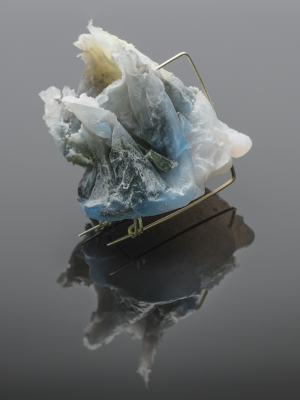
I have always had a great interest in craft and art. I remember making my first jewellery pieces when I was seven: a few rings made out of colourful wires I found on the field next to my school. I recall also selling them! Haha!
I grew up in a Russian family in Latvia, where I graduated from the Art Academy of Latvia in 2013 as a Metal Designer specializing in jewellery. Immediately after that I moved to Sweden where I continued my studies at HDK, University of Gothenburg. Gothenburg is a cold city, but I believe it gets heated up by thousands of students that live here. For me this city is full of inspiration and dynamism. At the same time, it has a necessary calmness that I need for work. After graduation I decided to stay longer and take an advanced individual course, so my studio is temporarily located back in the school facilities where I previously made the pieces selected for SCHMUCK‘16. As this is the school’s workshop I am usually surrounded by people, which is an incredibly fun and creative environment.
For as long as I remember, I have always been finding and collecting small objects. My drawers at home are full of shells, branches, stones, fur and whatnot. When it comes to my work place however, I like to be selective. It could be inspirational materials such as minerals and stones or modified objects, like an eraser that I cut and inserted into rubber jellyfish tentacles – one of my memory items from a study trip to Japan.
Before I begin crafting jewellery, I usually work with a sketchbook where I collect essentials that I would like to see in my work. It could be photos, collages, material samples or just something fun that I can fold into the sketchbook! I also think it is important to have a clean workspace, especially when I start to work or sketch. This helps me focus.
The selected pieces for SCHMUCK’16, Frozen Moment, are about feelings of nostalgia, of a moment in time. In my work, I was looking for materialization of these abstract matters. I based it on associations and feelings. After a period of research, I came up with my own material that the pieces are made out of. This material has two main compounds: polymer, which is light and transparent just like ‘a moment’; and crushed marble, which creates an illusion of a solid stone that I associate with a feeling of nostalgia.
Instead of valuable jewels, I celebrate the idea behind the material. That’s why for the rear of the brooches and other supporting details, I use valuable metals like gold, gold-plated silver, and titanium. To make this project I crafted more than 200 pieces. I then selected twenty-one and crafted them into the jewellery you see today.
In regards to the photos: In the little bottles are differed crushed marble powders. The rest is my inspiration – stones, minerals and memory photos that were printed without black ink.. As a lot of my project is about memories, I have a lot of “little reminders”.
LORI TALCOTT
Seattle, Washington, USA
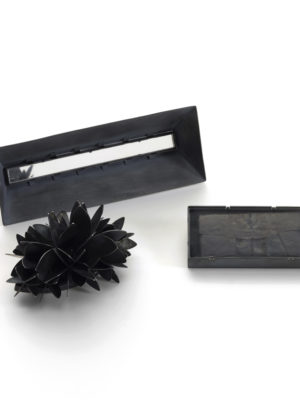
My studio is located in a converted garage behind my house, in the neighbourhood of Ballard, Seattle. Originally a maritime, working class borough, in recent years, Ballard has become gentrified – traditional diners and fisherman supply stores being replaced by trendy restaurants and boutiques. That said, the old is evidenced amongst the new, with the shipyards and fishermen’s terminal still thriving. My studio is a couple blocks from the locks – a working waterway – where huge barges and small boats, tiny smolt and full grown salmon, make their way between salt and fresh water. During the day, I experience my surroundings through walking. At night I can hear the faint hammering from the shipyard, muffled horns from the locks, seals barking, and the smell of low tide. Both the sounds of people physically working and the rhythms of nature anchor my place in the world.
Two workbenches frame my studio space – both belonging to my great grandfather and passed down to me from my father. Many of my tools were passed down as well – saws, hammers, punches, trammels, and engravers. These I use in my work everyday. For me, the old is not about sentimentality, but rather, practicality – using what one already has in order to make something new.
I think about jewellery as action – as a verb rather than a noun. Alongside its symbolic meanings, I am interested in what jewellery is doing in the world – as a ritual, emotional, and performative object. How it is an agent in negotiating social, temporal, and spiritual boundaries. Research, and the language that evidences it, is an essential component of my process and studio practice – each discipline informing and illuminating the other. I see these structures of exchange as “falsework,” the removable wooden structure upon which an arch or road is built. Dismantled, the beautiful and laboriously made false work haunts the place where it once existed.
The pieces selected for SCHMUCK’16 are from my recent series, Homeopathic Objects. Stemming from the Latin homeo, “same,” and pathos, “to suffer, feel emotion,” the word homeopathic evokes the associative mode of thinking that anchors this work. Homeopathic Objects draws on the theory of Sympathetic Magic, the belief that there is an invisible tether that binds people, places, and objects across time and distance, and the concept of similia similibus curentur, that like cures like. Historically and cross-culturally, systems of magic have customarily been practiced for the purpose of affecting the future, controlling the forces of nature, and protecting the wearer from physical or metaphysical harm. Homeopathic Objects descends from this genealogy, but is less about commanding external, metaphysical entities and more about material metaphors having the capacity to affect the embodied experience of the wearer.
DANIEL VON WEINBURGER
Antwerp, Belgium
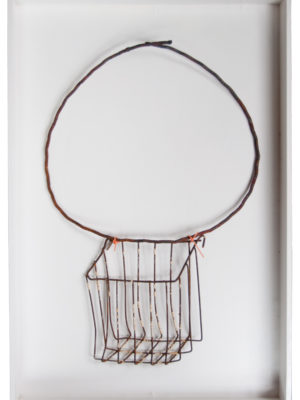
I started making jewellery when I was 15 years old. It was the time of Carnaby Street in London, the Sixties, you know. And also in Antwerp, boutiques started to open up in the former whorehouses. The hippies and the mods. This is probably all Chinese to you… I made earrings from champagne corks and wooden clothes pegs. I am talking about 1965, lol. It is how I paid for my studies in the famous art school from Antwerp and I haven’t stop making jewellery since.
My whole house is my studio and workplace. Poor wife. I started in the attic. When it got too stuffed and the (10) children were out of the house, I started to work in the living space, sometimes I work on the dining room table. Poor wife. Or I work in the salon. The salon is also slowly getting stuffed. There is a table of 4 meters (10 children, you know :-)). And I started stuffing my work into our bedroom and the former children’s bedrooms (no pictures of those rooms, a veto of my wife :-)). Poor wife.
I am located in Antwerp, Belgium. We have been there about 30 years and lately it’s becoming more and more a bobo (bourgeois-bohemian neighbourhood). It is known for the riots of the Maghreb people and it is known as Borgeroko from Borgerhout (that is the name of the place). And Morocco because there are a lot of Moroccans living here too. But it is also becoming more of a neighbourhood for young artistic people.
The front of my family home is a house from the end of the 19th century. The back of the house used to be a diamond-cutting factory from 1923. This is where we live and where I work.
I sent so much work for the SCHMUCK’16 submission… They invited me and I now have sent the five red jewels you can see in the photos. I took red as a theme and then I wanted to show different ways I see the jewels, I even made some ties. The minimal jewels are the work I am doing now, and I am also working on the Chairs to Wear (the white pictures with a man wearing the chairs). But I am always busy with different things; I am now also making my website.
Everything inspires me. I really use everything. And not only that, but I keep searching. I hate very, very much the people that make the same thing their whole lives and call that their “style”. I think that those are people are not artists. Ok, they make jewels and earn their money but this has nothing to do with art. And they are allowed to do what they want but to me they are retailers. Perhaps I am jealous, I don’t earn my money. I am just constantly spending money 🙂 but I think that the adventure and the love is more important.
PETRA ZIMMERMAN
Austria, Vienna
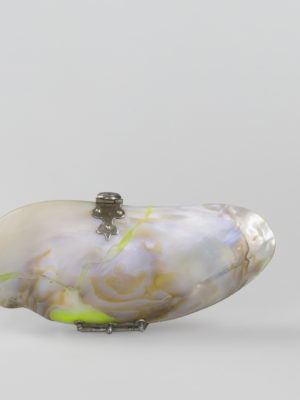
Welcome to my studio!
My studio is located at Linke Bahngasse in Vienna, Austria. I share the space with two other artists, Kurt Rudolf and Christian Ganzer. I´ve been working there for two years, but I’ve known my colleagues for almost 20 years. Kurt Rudolf and I met in 1996 at the summer academy in Salzburg in a jewellery course by Peter Skubic, and I studied with Christian Ganzer at the University of Applied Arts Vienna. All three of us have our own individual working rooms and we share the main space with all the tools and machines.
Beside my think/draft/sketch desk in the main room, I have my bench in a cosy corner where, withdrawn from the rest of the world, I work on my pieces. Something very important for my working atmosphere is the cassette recorder with radio function. At a certain point, my creative mess turns into chaos and I start cleaning up accordingly.
At the moment I´m working on two pieces, a bracelet and a ring, using historical metal purses and acrylic. One of the most important tools for this is the pressure vessel for ‘cooking’ the acrylic. The appropriated historical parts in my newest pieces are not only material for something new, but they also carry a narrative. Within this narrative I try to visualize, to rework, to deconstruct, to rearrange, to compliment, to abridge, to eliminate, to reshape and finally to translate the upper part of a 1920’s evening purse deconstructed and rearranged into a brooch or to change the function of the historical, mother-of-pearl purse by visibly repairing it with neon polmethyl methacrylate.
I´m especially interested in the cultural history of jewellery, not only from the view of the maker, but also from the view on the wearer.
This article was first published in the #3 Current Obsession Paper, 2016
